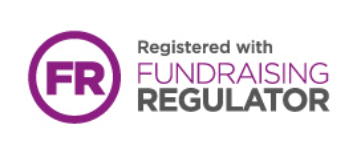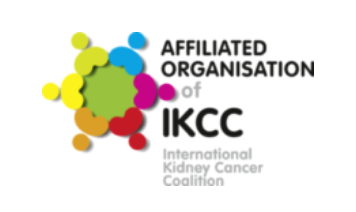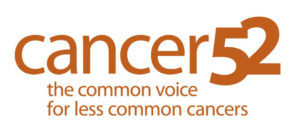Early Access to Medicines Scheme (EAMS)
The Early Access to Medicines Scheme (EAMS) aims to make promising new medicines available to patients sooner. It was started in March 2015, and it is a process through which patients can access new drugs that are not yet licensed for use in the UK.
EAMS is run by the Medicines and Healthcare Products Regulatory Agency (MHRA), the government organisation that ensures the safety and effectiveness of all medicines and healthcare devices on the market in the UK. The MHRA approves product licenses (marketing authorisation) for all new drugs or new indications for existing drugs, allowing them to enter the UK market.
If a drug has not been licensed, or recommended for use on the NHS, there may be some uncertainties about how safe and effective the drug is, and what side effects it might cause. For EAMS drugs, clinical trials might still be ongoing to gather more information about side effects and how well the drug works, or the drug may be waiting to be approved by the MHRA for a product license.
Clinical research and the licensing process can take many years. In addition, all medicines need to be recommended for use on the NHS before a doctor can prescribe them. The National Institute for Health and Care Excellence (NICE) carries out this process in England, the Scottish Medicines Consortium (SMC) in Scotland, and the All Wales Medicine Strategy Group (AWMSG) in Wales. These organisations decide whether the drug works better than available treatments and represents value for money for the NHS, and can take many months to complete.
During the time that a new, promising drug is undergoing approval for a product license or recommendation for use on the NHS, it is not available to patients, unless it can be accessed through the Cancer Drugs Fund (in England only). EAMS provides patients access to these drugs while the licensing/recommendation processes are ongoing.
EAMS can also be used to give doctors information to support a decision to prescribe a drug off-label i.e. for a condition, age group or dose that it is not licensed for.
EAMS can only be used for drugs that may benefit people with a life threatening or seriously debilitating condition when there is no other treatment available to them.
How are decisions made about which drugs can enter EAMS?
The new drug needs to have been through phase 1 and 2 clinical trials, and been proven to be safe and effective before it can enter EAMS. It may also have been through phase 3 trials too, in some cases.
1. Promising innovative medicine (PIM) designation
The manufacturer then applies to the MHRA for what is known as a promising innovative medicine (PIM) designation. To be awarded a PIM for a new drug, the manufacturer needs to submit the results from all the research carried out so far on the drug to the MHRA. A PIM is an early signal that the drug may be a possible choice for EAMS, and might be able to help people who have no other treatment options.
2. EAMS scientific opinion
If the MHRA decides that doctors can prescribe the drug, the next stage is a scientific opinion. The manufacturer must have a PIM before they can apply for an EAMS scientific opinion. The scientific opinion describes the risks and benefits of the drug based on data gathered from the patients who will benefit from the medicine. The opinion supports the prescriber and patient to make a decision on whether to use the medicine before its licence is approved. A positive scientific opinion lasts for a year. The company can then apply to renew it.
3. Public assessment report (PAR)
Following a positive EAMS scientific opinion, the MHRA produces a public assessment report (PAR). This has information about
- How the product is used and how it works
- Summary of key clinical studies/trials (research)
- Which conditions it can be used to treat, such as a particular type and stage of cancer
- Who can give the medicine
- The reason for the positive EAMS decision by the MHRA
- Any uncertainties about the use of the medicine for this condition
- Possible benefits and side effects
- Information about any on-going studies/clinical trials
- How the MHRA will monitor and manage any risks
The PAR is used by the doctor and the patient to decide if the treatment will benefit the patient.
EAMS safety measures
Because the drugs in EAMS are all new drugs, doctors are still investigating how effective the drugs are and what side effects they cause. There may be some side effects that are not yet known about and haven’t been seen in the clinical trials conducted so far.
Doctors need to monitor side effects and how well the drug works while a drug is in EAMS. The manufacturer needs to provide regular updates to the MHRA as part of their agreement to supply the medicine. These updates are given every 3 months, at least.
1. Reporting side effects
To enable the manufacturer to provide these updates, you need to keep your doctor informed of any side effects and/or test results. If you have any serious side effects, you need to let your doctor, nurse or pharmacist know as soon as they happen. Your doctor needs to report all serious side effects to the manufacturer within 24 hours of them happening. All other side effects and test results need to be reported within 5 days.
2. Patient alert card
The patient alert card holds information about the drug you are taking and its known side effects. It also has the contact details for your doctor and specialist nurse. This should be carried with you at all times.
Which drugs are available on EAMS
EAMS started in early 2015 and the MHRA has only looked at a few drugs. The UK government website contains details of which drugs are available on the EAMS.
To get access to a drug that is in the EAMS, please talk to your doctor to see if the drug is suitable for your situation. If your doctor agrees that you might benefit from the EAMS drug, he/she will make an application to the Department of Health (DH) in your local area.
If you are not able to access an EAMS drug, it can be very disappointing. Please talk to your doctor about how you are feeling and why you are not able to have the drug. You could also talk to your doctor about taking part in a clinical trial for a new kidney cancer drug: please see our KCSN Clinical Trials Database for lists of kidney cancer clinical trials, and our Clinical Trials Hub for information about taking part in a clinical trial, including patient stories, videos and clinical trial regulations.
Please contact us for more information about EAMS.


